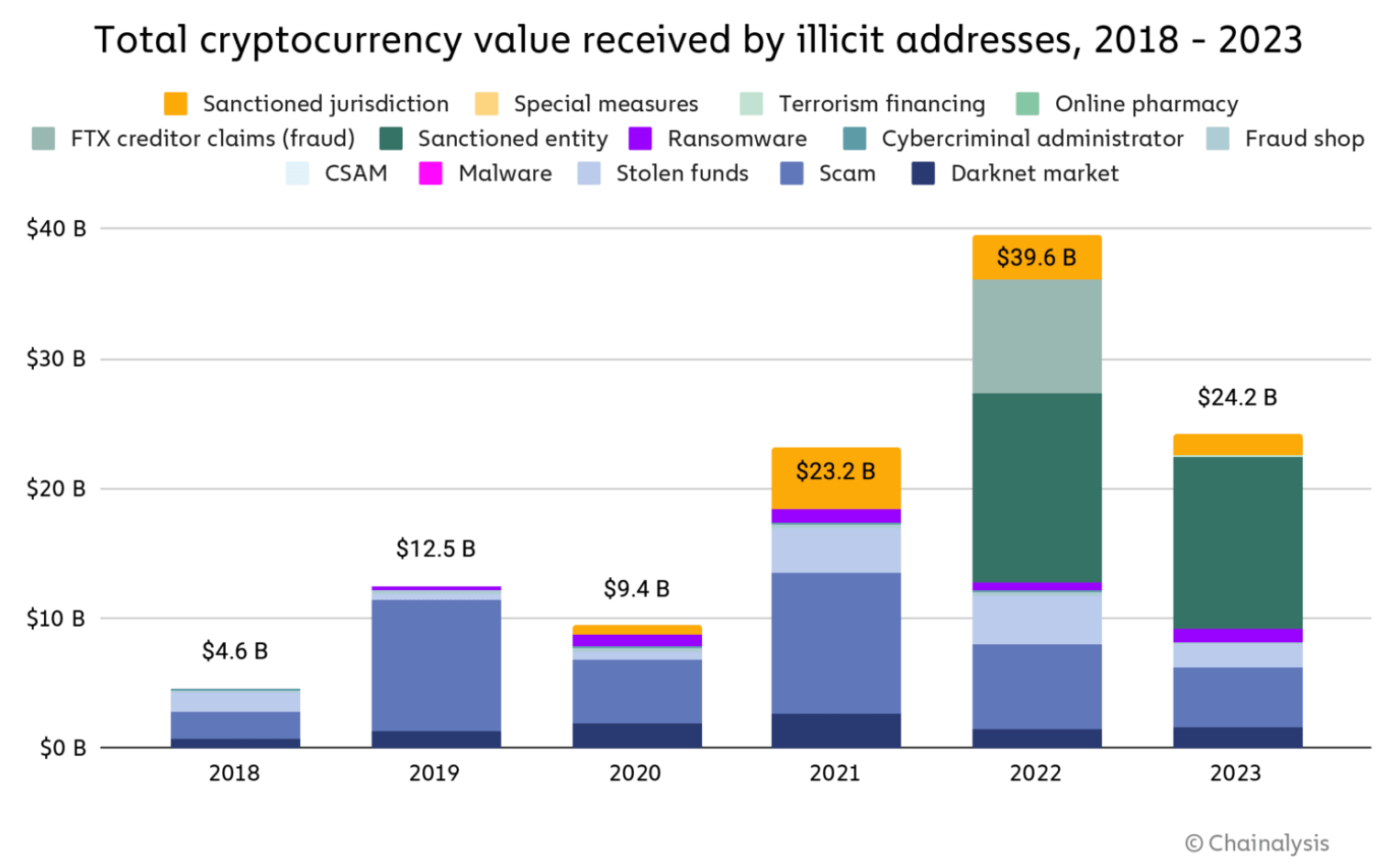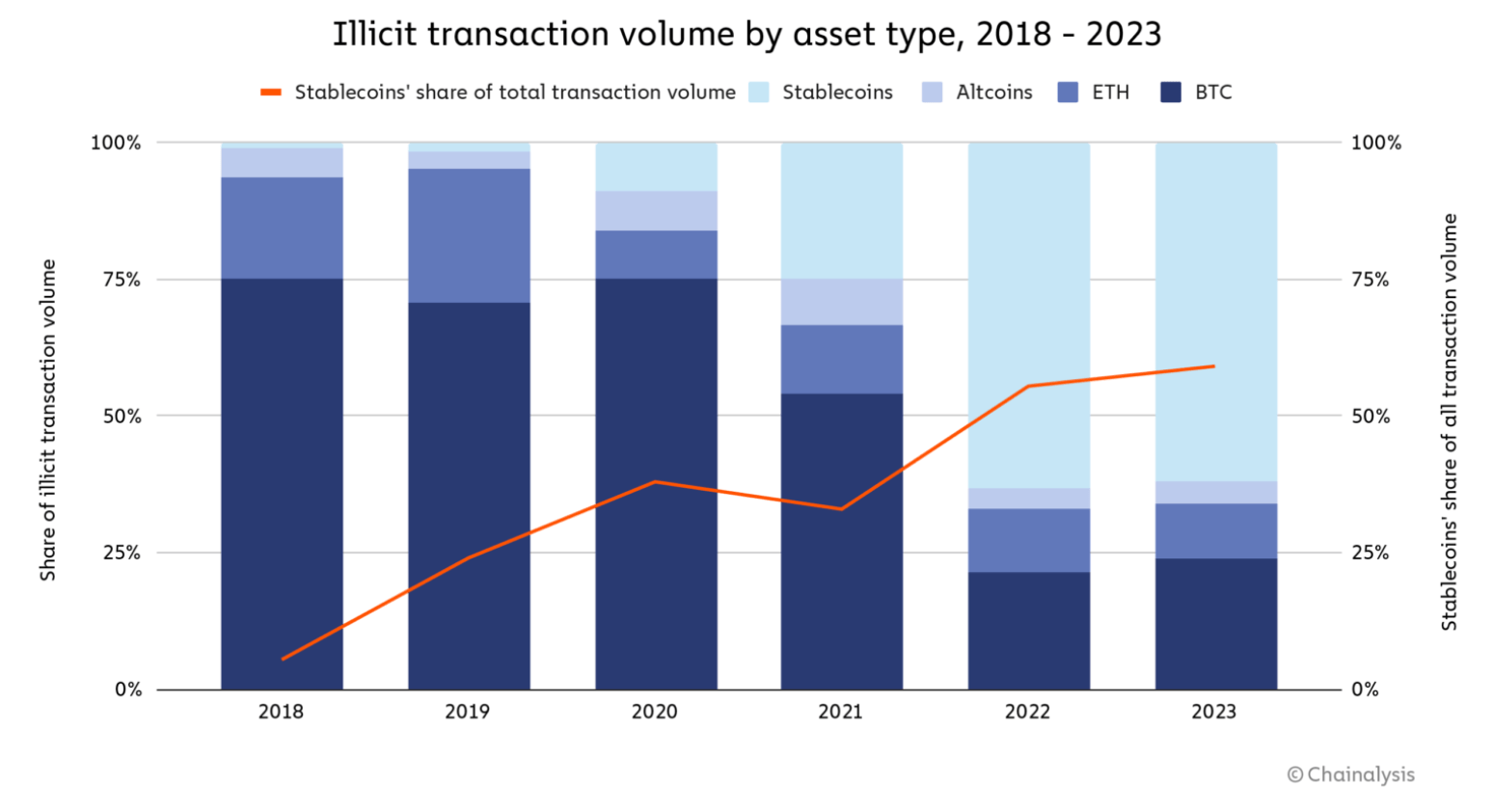Chainalysis report. Most of the time, the cryptocurrency sector finds itself torn between reality and fantasy. With, on the side of the storytellers, a recurring desire to pass off this emerging digital economy as a simple tool in the service of crime. It must be said that this sector is increasingly overshadowing traditional finance, which is falling into the Bitcoin rabbit hole. However, repeated reports on the subject demonstrate anecdotal interest in these digital currencies in the context of activities linked to money laundering or terrorism. And obviously, the year 2023 confirms this trend with a drop of 40% compared to 2022, or a proportion of 0.34% of the entire transaction volume recorded over this period.
Crime down 40% compared to 2022
Each new year is an opportunity for the company Chainalysis to draw up a detailed assessment of criminal activities registered in the cryptocurrency sector. And most of the time it comes down to clarify things in the face of a number of untruths as boring as they are recurring. Because no, Bitcoin is not – or no longer – the favorite cryptocurrency of cybercriminals.
“Until 2021, Bitcoin reigned supreme as the cryptocurrency of choice among cybercriminals, likely due to its high liquidity. But that has changed over the past two years, with stablecoins now accounting for the majority of all illicit transaction volumes. »
Chain Analysis
Indeed, if we are to believe official speeches, the cryptocurrency sector would be a simple nest of criminal and fraudulent activities. But the only real record that this digital economy shatters every year is much more in the field of messy hacks of which she is constantly the victim.
However, the year 2022 will have been marked by a sharp increase in these sums received by addresses considered illicit. In question, the numerous sanctions issued by the United States in connection with the war started by Russia in Ukraine. And in the end, a historic high set at almost 40 billion dollars, for the very first time since this surveillance was put in place.

Either way, the year 2023 records a significant drop of 40% compared to the previous one, with a total of $24.2 billion. The main reason is the absence of the “8.7 billion dollars of Creditors’ Claims Against FTX » (in light green) finally assigned to 2022.
Only 0.34% of total crypto transactions
Bitcoin is therefore gradually being abandoned in favor of stablecoins. The latter are, however, highly centralized, with issuing companies able to freeze funds linked to activities recognized as illicit or sanctioned by OFAC. But this doesn’t seem to pose a problem for criminals…
However, the Bitcoin remains the preferred cryptocurrency in the context of fraudulent activities “such as sales on the cryptocurrency market darknet and extortion using ransomware “. One last activity, however, considered less and less profitable for criminals.


But looking closer, all this ultimately represents onlya barely perceptible drop of water in the total volume of transactions linked to cryptocurrencies over the past year.
“In addition to the reduction in the absolute value of illicit activities, our estimate of the share of overall crypto transaction volume associated with illicit activities has also decreased, from 0.42% to 0.34% in 2022. »
Chain Analysis
However, as the company Chainalysis points out each time, these figures are likely to change over time. Because “in a year, these totals will be almost certainly higher “. Just look at the upwardly revised estimate for 2022, from $20.6 billion initially to $39.6 billion finally. Because as soon as an address is sanctioned by the United States, it enters the blacklist to be taken into account. And this simple category alone represents “61.5% of the entire volume of illicit transactions measured during the year”.
